I am creating a GTK+ 3 application which draws an animation using Cairo in a GtkDrawingArea widget. I get visual glitches, such as the ones observed in the images below. These appear only for a single frame, there may be none, or one, or more than one per frame. I am asking for help in identifying the possible issue. Here are the details of my code:
In my main method before starting the gtk_main() loop I hook up a timeout.
g_timeout_add(50, queue_draw, gtk_builder_get_object(builder, "window"));
"window" is the id of my GtkWindow. The queue_draw function is as follows:
gboolean queue_draw(gpointer user_data)
{
gtk_widget_queue_draw(GTK_WIDGET(user_data));
return TRUE;
}
I would think that I could pass the GtkDrawingArea object to this function rather than my whole GtkWindow, but the animation disappears in that case. I am also interested comments on this behavior but it is not my main question.
The draw signal of my GtkDrawingArea is hooked to a function gboolean drawing_area_draw(GtkWidget *widget, cairo_t *cr, gpointer user_data). Inside this method I draw my 3D bar chart by a lazy painter's algorithm, each bar being made of three parallelograms, and the bars being drawn in z order.
It is not a problem with my computer failing to keep up with the frame rendering, somehow corrupting a frame buffer. I set the timeout to 1000ms to capture the images below.
I have not made any calls to gtk_widget_set_double_buffered().
I was not able to observe the issue on Windows Subsystem for Linux (WSL) using XMing as the X server, which makes me think it might be a library issue, or some poorly defined behavior.
The first image is of the visual glitch during my program in normal operation. In the second, I modified the code and fixed the height of the bars to a gentle gradient. This gives a much better view of the issue, but it still very puzzling.
development library package details:
$ dpkg --list | egrep 'lib(cairo|gtk).*-dev'
ii libcairo2-dev:amd64 1.15.10-2ubuntu0.1 amd64 Development files for the Cairo 2D graphics library
ii libgtk-3-dev:amd64 3.22.30-1ubuntu3 amd64 development files for the GTK+ library
library metainformation details:
$ pkg-config --modversion gtk+-3.0 glib-2.0 gdk-pixbuf-2.0 cairo
3.22.30
2.58.1
2.36.11
1.15.10
x11 details:
$ xdpyinfo | head -n 5
name of display: :0
version number: 11.0
vendor string: The X.Org Foundation
vendor release number: 12001000
X.Org version: 1.20.1
Linux details (actually Zorin OS 15 not Ubuntu 18.04):
$ uname -a
Linux <hostname> 4.18.0-25-generic #26~18.04.1-Ubuntu SMP Thu Jun 27 07:28:31 UTC 2019 x86_64 x86_64 x86_64 GNU/Linux
edit: Here is another very interesting screenshot of the issue.


